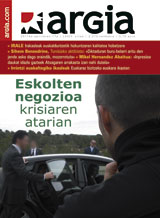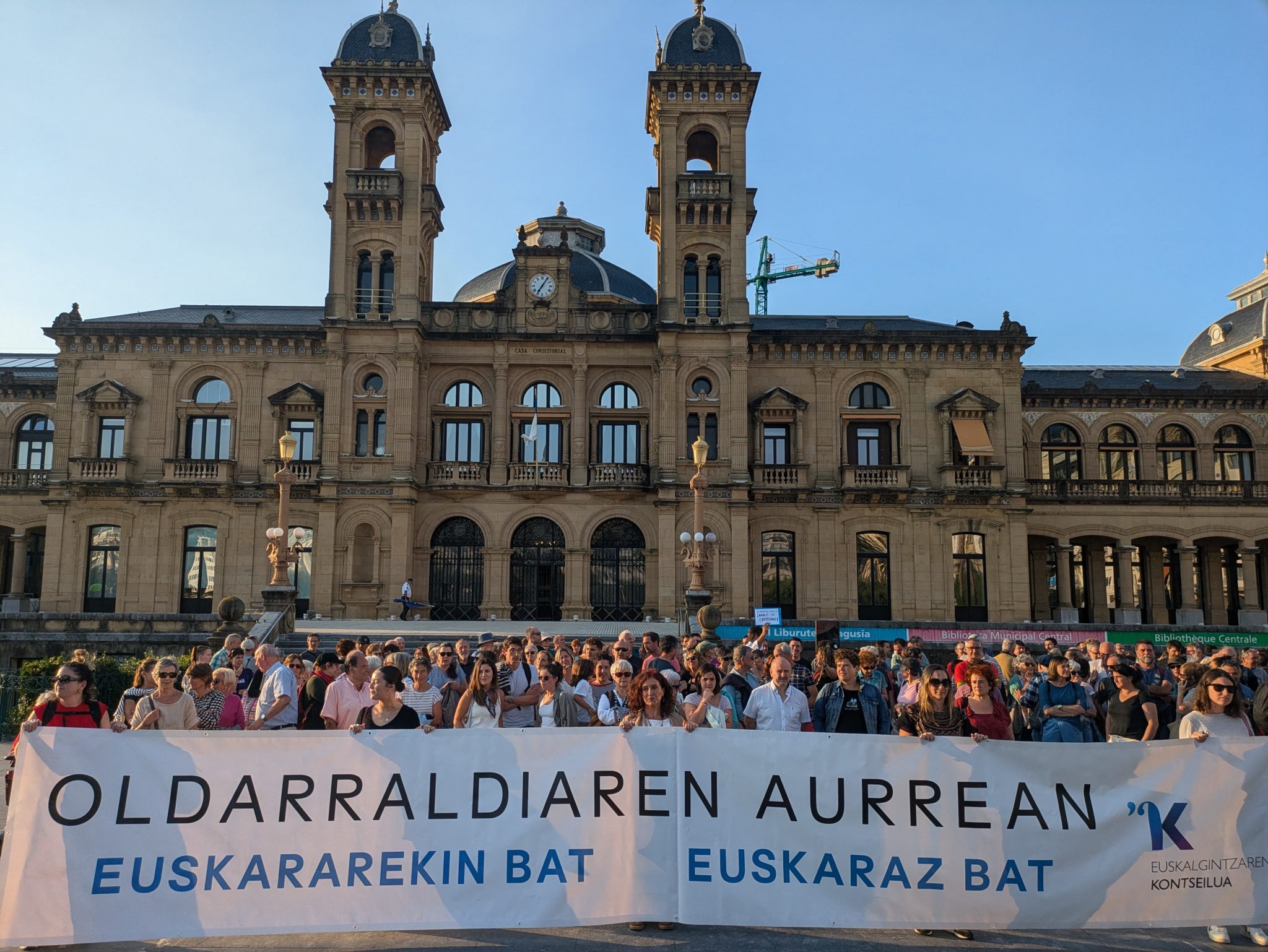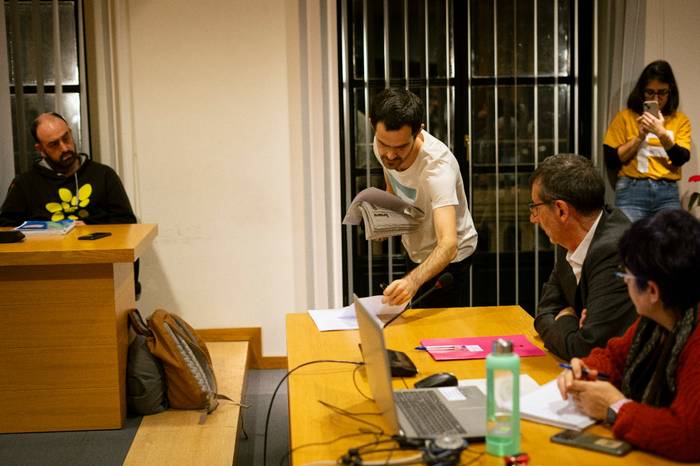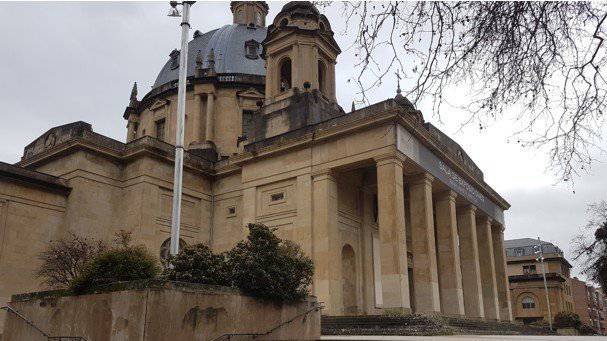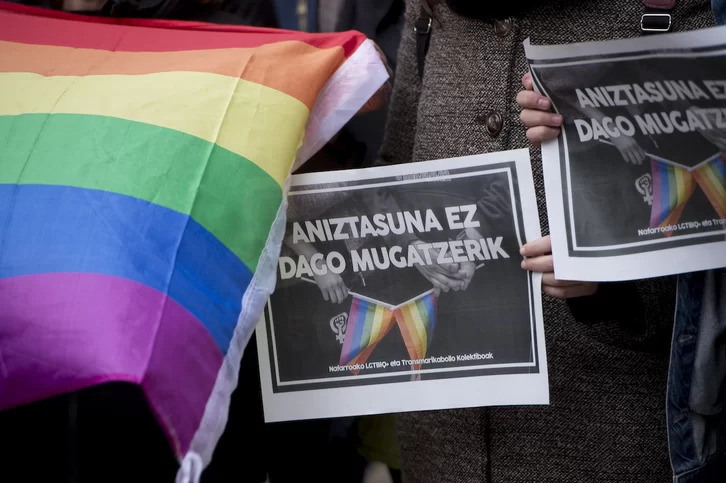No intervention thanks to the solvency of Basque boxes
- Savings banks and credit cooperatives in the Southern Basque Country claim to be solvent and therefore hope to avoid the intervention of the central administration. In fact, BBK, Kutxa and Vital Kutxa announced a “cold unification” in March.

Due to the financial restructuring implemented by Madrid, the savings banks of the Southern Basque Country claim to guarantee solvency and, therefore, they will not have to suffer interferences. As we know, financial institutions (banks, savings banks, etc.) that do not have the minimum core capital to deal with risky assets are in danger of being “nationalized” by the central government and then privatized. This recent decision by the Spanish Government will have to be addressed by all financial institutions. The goal is to prevent the weakest boxes from bleeding out in eight months.
Next September, financial institutions (i.e. those that do not reach the 8% capital base (10% for non-listed companies) to deal with risk-weighted assets (i.e. those that do not reach the final objective of the accounting system called Basel III) will be nationalised. So far, the law required only 2% of risk-weighted assets. Once nationalized, these entities will be privatized and sold to those who make the best offers. According to the accounts of the central government, the state will have to spend 20 billion euros to increase the solvency of the coffers.
The Government is of the opinion that during this period the weak funds will have to seek private investors to guarantee their viability, but the Government itself knows that the presence of investors will be very difficult due to toxic assets. For this reason, the Government has set a deadline of 30 September for financial institutions to guarantee solvency. If these private investors are not found, they will be nationalized. However, public funds will be available from March to the entities in need, provided that the 2010 accounts are closed.
Basque boxes will not need intervening
In this context, what is the situation of savings banks in the Basque Country? Before answering the question, it is necessary to clarify: That the government’s decision to speed up the “nationalization” of vulnerable financial institutions only affects savings banks and certain banks.
The representatives of the savings banks of the Southern Basque Country (BBK, Caja de Navarra, Kutxa and Vital Kutxa) say that their entities are solvent and therefore will not need state intervention. The three boxes of EAE are among the four best in the Spanish State. BBK has carried out a risky merger with the Andalusian entity Cajasur, but has announced that it will close 2010 with a capital of 10.2% (and the minimum required is 10%). This savings bank in Bizkaia had a capital of 14.6% to deal with active risks. After the acquisition of Cajasur, it expects to close 2010 with 10.2%. The Fund reports that it has a major capital of 12.51 per cent. Vital boxes, on the other hand, 12%. And the Caja de Navarra –together with Caja Sol, Banca Cívica de Canarias and Caja de Burgos– has a main capital of 9.26% to deal with risk-weighted assets. The Caja de Navarra team has been working with J.C. He tried to participate in the American investment company Flowers, but after the failure of the program, this group plans to take 15% of the capital to the Stock Exchange.
In this context, it is necessary to understand the “cold convergence” initiated by the three PPAs; it is not yet clear which bank card the convergence will generate. It will have $80 billion in assets.
The future of the Caja Vasca, Caja Norte and Caja Rural
And in what condition are the rest of the boxes: Caja Vasca, Caja Norte and Caja Rural de Navarra? Should they decide to apply the aforementioned financial restructuring to these entities – and it seems that it will – at least the Basque Country Fund and the North Bank would easily comply with the requirements to avoid intervention, since the solvency of both entities is verified. Thus, Caja Vasca has a main capital of 18.84% to deal with risk-weighted assets, compared to 13% for Caja Norte. We do not have data from Caja Rural de Navarra, which is part of the national network of Cajas Rural.
Euskal aurrezki kutxen higiezinen arriskua –Euskadiko Kutxa, Ipar Kutxa eta Nafarroako Rural Kutxa kontuan hartu gabe– 11.049 milioi eurokoa da eta, hala ere, kreditu inbertsioen portzentajea Espainiako Estatuko gainerako entitateen batez bestekoa baino askoz txikiagoa da. Espainiar aurrezki kutxek, batez beste, kreditu inbertsioaren %20a etxebizitzak eraikitzera eta sustatzera bideratu zuten. Euskal kutxen artean, aldiz, bakar batek ere ez zuen gainditu %11. Horixe adierazten dute entitate bakoitzak jakinarazitako datu ofizialek.
Hala, BBK-k, Cajasurrekin bat eginda, 44.620 milioi euroko aktibo kontsolidatuak ditu. Higiezinen arriskua, berriz, 6.661 milioikoa da, hau da, kreditu inbertsioaren %11. Kutxaren aktibo kontsolidatuak 20.906 milioi eurokoak dira eta higiezinen arriskua, 1.307 milioikoa, kreditu inbertsioaren %8,6, alegia. Vital Kutxak 9.200 milioi euroko aktibo kontsolidatuak eta 664 milioiko higiezinen arriskua dauzka, kreditu inbertsioen %10,1. Nafarroako Kutxa, Caja Sol, Banca Cívica de Canarias eta Caja de Burgos entitateek osatutako Banca Cívica taldeak 70.963 milioi euroko aktibo kontsolidatuak ditu eta higiezinen arriskua 5.417 milioikoa da, hau da, kreditu inbertsioaren %11,1.
Funts hornidurei dagokienez ere, euskal kutxek Espainiako Estatuko gainerako aurrezki kutxen batez bestekoa gainditzen dute. Hala, BBK-Cajasur bikoteak 1.178,9 milioi euroko hornidura espezifikoak (%32ko estaldura) eta 417 milioiko hornidura generikoak (%44ko estaldura) ditu. Kutxak 30,1 milioi euroko hornidura espezifikoak (%28ko estaldura) eta 19,2 milioiko hornidura generikoak (%29ko estaldura) ditu. Vital Kutxaren hornidura espezifikoak 129 milioikoak dira (%19ko estaldura) eta generikoak, aldiz, 16 milioikoak (%22ko estaldura). Azkenik, Banca Cívica taldeak 1.973,7 milioi euroko hornidura espezifikoak (%36ko estaldura) eta 585,7 milioiko hornidura generikoak (%47ko estaldura) ditu.
Vagina Shadow(iko)
Group: The Mud Flowers.
The actors: Araitz Katarain, Janire Arrizabalaga and Izaro Bilbao.
Directed by: by Iraitz Lizarraga.
When: February 2nd.
In which: In the Usurbil Fire Room.









